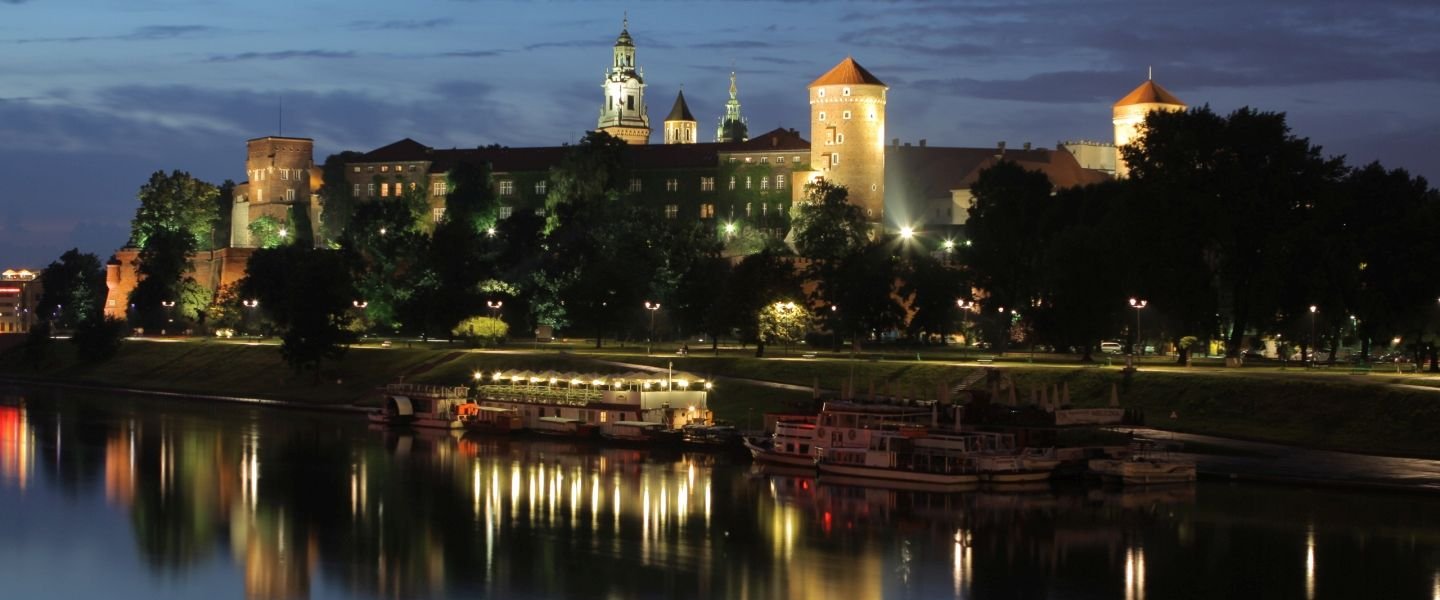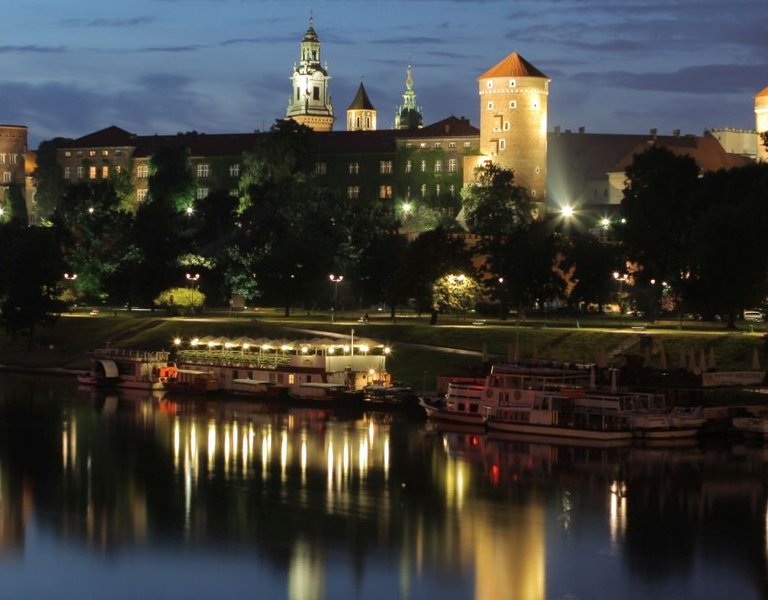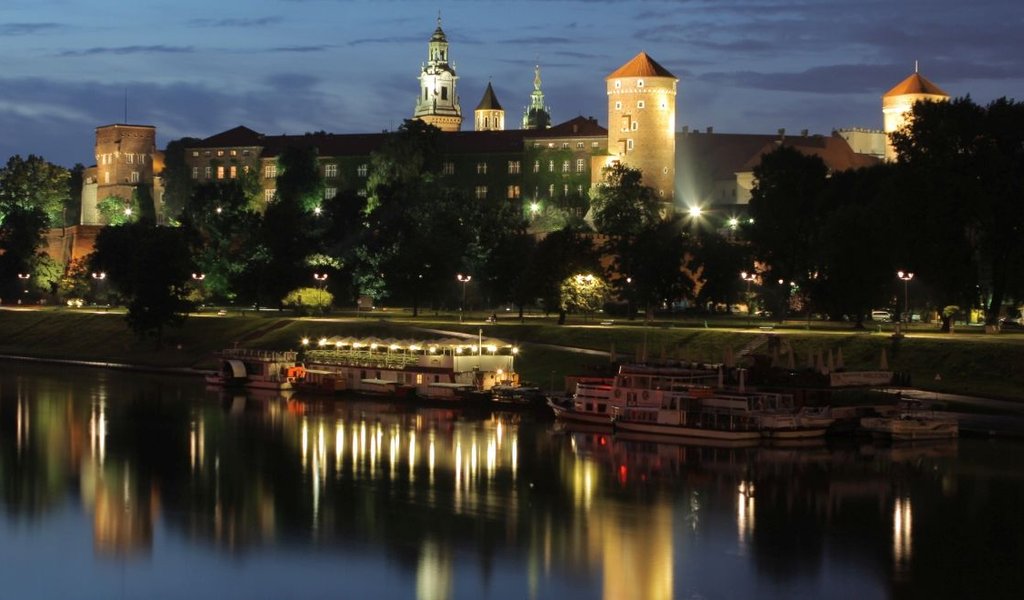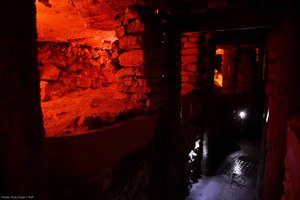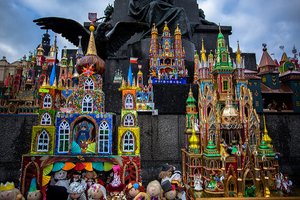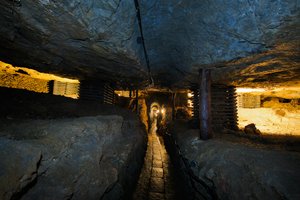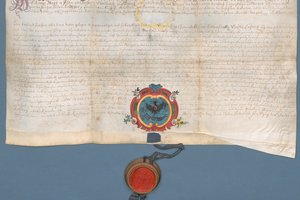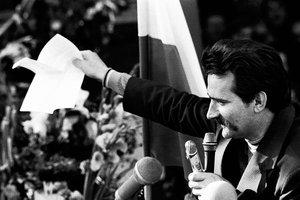Krakow is a laboratory for thought on heritage
I want the UNESCO session in Krakow to mark a return to the roots, Poland.pl was told by Prof. Jacek Purchla, art historian and economist, professor of humanities, a specialist in the field of cultural heritage and urban history, an expert on Krakow; founder and director of the International Cultural Centre in Krakow and chairman of the session of the UNESCO World Heritage Committee in Krakow in 2017.
POLAND.PL: What benefits will Poland have from hosting the 41st session of the UNESCO World Heritage Committee?
PROF. JACEK PURCHLA: Above all, one has to stress that Poland was one of the first signatory countries of the convention. We’ve therefore waited for this honour for 40 years, since 1976, when Poland was one of the few socialist countries to ratify the convention. In order to host a session of the Committee one has to first become a member of it. Poland is a very active member of the UNESCO World Heritage Committee during the term coming to an end in 2017.
Being the host of such an event brings a lot of prestige and it is an opportunity to show our achievements to the world, not only monuments protection and conservation projects, symbolised, for example, by the reconstruction of Warsaw's Old Town and the Royal Castle in Warsaw, but
more broadly, Poland’s experience with the past and heritage.
It is also a great opportunity to share our experience, not only with Europe, but with the world. The power of UNESCO lies also in the fact that there are over 190 signatory countries to the Convention Concerning the Protection of World Cultural and Natural Heritage.
I don’t think it was a coincidence that Krakow was chosen to host the 41st session. Not only because it is the first Polish entry and one of the first inscriptions in general – Krakow was listed as early as 1978, among the first 12 entries. Krakow is a great source of Polish history and for over 200 years it has been a laboratory of sorts for not only Polish but also Central European thinking about the protection of cultural heritage.
It is an extraordinary place that should provide the participants of the meeting with plenty of opportunities to get acquainted with Polish culture and history. I don’t only have Krakow in mind, but also the region, Małopolska (Lesser Poland), where almost than half of the Polish entries come from.
The great diversity of Polish inscriptions makes Krakow a very attractive place for a global meeting of approx. 2,000 participants, delegations from many countries, experts, representatives of non-governmental organizations and the media.
Due to this, the meeting, apart from its expert and promotional dimension, also assumes a political character. This is a very good opportunity for the host country to play the role of mediator and leader of the global discourse on heritage and to show the world its openness to dialogue.
You mentioned that Poland is a very active member of the committee. Besides from the organization of the session, what does this activity look like?
This activity is very apparent especially during the annual sessions. It manifests itself primarily in the very active participation in its work. The paradox lies in the fact that the UNESCO sessions are associated with large meetings, with the format of a big conference, meanwhile, it a session of a global dimension and formally a meeting of 21 delegations of state parties that have a mandate from the signatories to the convention to represent them. And these countries decide about all the issues on the agenda during the 10-day marathons.
During the 40th session, we made some 250 decisions. They do not apply only to new entries on the world heritage list, heritage in danger, the monitoring of sites inscribed already on the list, but these meetings are also a field for the general debate on the convention itself, its evolution and change, everything that concerns the relationship between heritage and society.
Over the past 40 years, in fact, the heritage came out of the reserve, whose fate is determined by a caste of heritage restorers. Heritage belongs to all of us and I think it has become obvious to us all that heritage is our memory, our choices and our identity. Its protection depends not only on the convention and - smaller or larger - efforts of individual states-parties to the convention or international public opinion, but above all from the people on the spot – to what extent they identify with the heritage, how much they understand it, how important it is to them to protect it. These are great challenges that the committee today cannot escape from.
Which decisions can we expect to be made at the session in Krakow?
This question is a little bit premature. I will be able to talk about it by May. One of my main tasks is to co-create an agenda for this meeting. This agenda has its own structure. What we know for sure is that a large part of the meeting will include discussions on new entries. In recent years, the list has been growing by an average of around 20 new entries.
One of the key issues is the question of how long the list should be. When it was initiated in the early 1970s, the main focus was to try to identify the world's hundred greatest treasures. The success of the list, conventions and thinking about the treasures that are our common heritage today means that we already have 1,052 entries on the territory of 165 countries. Hence the decision that each country has the right to nominate one entry for the list during each session. At the same time, we accepted a maximum of 35 entries per year. Of course, this limit does not have to be filled.
Besides, in Krakow there will also no doubt be discussions on the issue of heritage in danger. During the previous session we entered eight new objects to the list of endangered heritage. I want to note that these entries refer not only to the victims of armed conflicts and civilizational struggles, such as in Palmyra, they also apply – to the surprise of many – to Liverpool, Vienna and Venice, among other places.
The threats that constantly face the objects on the list come in many different forms. Increasingly, threats to monuments come about as a result of, to put it diplomatically, the pressures of modernization. Then there are also natural disasters, such as tsunamis.
These are routine discussion points. I want Krakow to go beyond routine and to become a turning point with regards to returning to the roots, to a wider reflection on what we should protect, what the standards of this projection should be and what the relationship should be between state parties and non-governmental organisations.
The role of NGOs should be pinpointed more precisely, because heritage is
us, the people. Without the involvement of the local community, the effectiveness of this protection will be limited. The big problem in this respect is, for example, the commercialization of sites on the UNESCO World Heritage List.
The attractiveness of this list stems not only from the political ambitions of governments and politicians – it is good to "enter" the list – but it also results from a fact confirmed by tests, that the entry very often is life-changing for the place added to the list. It is a certain indicator for tour operators, tourists, publishers of guides.
This situation, in turn, may then threaten the authenticity of the place. Venice is the best example of such an extraordinary cultural treasure, where the local community has almost completely given way to millions of tourists who occupy the city every year.
This does not change the fact that the discussions over the new entries are often very heated, as new entries, unlike entries that are 30-40 years old for example, must go through a much more rigorous verification press, that scrutinizes their integrity, authenticity and to what degree they maintain the so-called Outstanding Universal Values.
Does this mean that something that has been added to the list 30 years ago, would perhaps not make it on the list if it was being considered today?
I wouldn’t say so. In the process of improving the convention and what we call operational guidelines, the oldest entries have now once again been verified with OUV. However, this very same verification process today takes much longer.
What instruments does UNESCO have to prevent damage being inflicted to monuments? How can UNESCO contribute to, for example, protecting Venice and monuments destroyed by the Islamic State?
Recent years have shown that the international community is, unfortunately, in many cases, helpless. The case of Palmyra, and before that Afghanistan’s Bamyan, led to serious thought being given to the development of mechanisms that aim to minimise losses. One of my competencies is co-deciding about the use of funds (International Heritage Fund), which is used primarily for financing rescue missions. Perhaps Krakow will be the place where a broader debate is held on this issue.
At the moment a conference co-organized by President Hollande is being held in Abu Dhabi, the main focus of which is on places that need to be protected because they are vulnerable to violence.
The increasing politicization of the World Heritage List has become a very hot issue during recent sessions, in particular at the 40th session in Istanbul, which was interrupted by the failed coup attempt. For me, this will be the biggest challenge. As someone coming from the academic world I would like to defend meritocracy, keeping an eye on standards, which are purely based on merit. Unfortunately, each year during the sessions, some state parties to the convention try to use the list to resolve political or territorial disputes.
Until the meeting in Istanbul, politicization had not taken place to such an extent. It is also important, when mentioning the protection of entries, to also allow more discussion on non-governmental organizations.
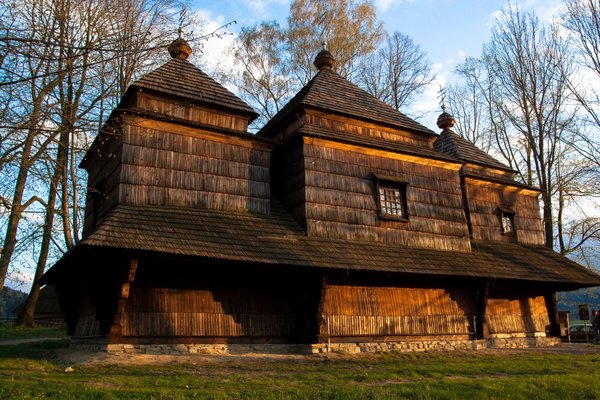 What other Polish objects have a realistic chance of being added to the list in the near future?
What other Polish objects have a realistic chance of being added to the list in the near future?
Among the 1,052 entries on the current list, Poland has 14 entries and 28 spots, because many of them are serial entries, including for example the wooden churches of Lesser Poland. We also have cross-border entries - including one of the newest entries, the wooden tserkvas of the Carpathian Region in Poland and Ukraine. Is that a lot? Spain, which we often compare ourselves to, has three times as many.
However, I think that it is not about quantity. The trend is now such that Europe has been self-limiting, increasing the number of countries, mainly from outside Europe. The excessive and quite obvious domination of Italy, France – the European powers in the sphere of heritage, is now being corrected. As for Poland and our chances, I would be very pleased if our – extremely diverse – entries were added to.
Poland began adding its places to the list relatively early. Krakow was one of the first entries. This was soon followed by the former Nazi German concentration camp Auschwitz-Birkenau – which set a precedent. The uniqueness of the salt mines in Wieliczka and Bochnia was also recognized early. An early addition was our only nature entry – the Bialowieza Forest, which is a cross-border entry that we share with Belarus.
The diversity of our entries also includes historic urban centres. Next to Krakow, the old town of Warsaw was recognized for the determination of the Polish nation in its reconstruction efforts, alongside Torun and Zamosc, for being ideal Renaissance city.
Also wood, which demonstrates the multi-confessional character of Poland’s entries: wooden Catholic churches and the Orthodox tserkvas of the Carpathians, the Protestant churches of Swidnica and Jawor of Silesia region. What's more, the list also contains objects from the 20th century. Wroclaw is a city-symbol here, it is city whose population was entirely exchanged as a result of World War II.
At the request of the Polish government, the work of the great German architect Max Berg was added to the UNESCO Centennial Hall list as an outstanding example of engineering thought of the early 20th century. I hope that the silver mine in Tarnowskie Góry will become Poland’s 15th entry. The mine is an example of technical thought and human economic activity from the Middle Ages to the present day.
If we consider the tentative list, then we have a wide range of objects on the Polish list. This list is increasingly important, because it forces us – as hosts – to think about what we could present to the world. During the recent meeting of the Polish National Commission for UNESCO World Heritage List we had a lively discussion about the Elblag Canal, which is an incredible – even on a global level – example of engineering thought of the mid-19th century.
The trend today in UNESCO is not only a preference for objects from outside Europe, but also a preference of serial and cross-border inscriptions. It is a formula that works and provides added value, because it forces co-operation between neighbouring countries.
However, if I were to speak as a Cracovian about what in my opinion should be added to the list in the near future, then I would have to say Nowa Huta. Among the 20th century man-made creations we have such entries as the ideal city of Brasilia, but we do not have entries that document an important chapter of the history of our part of the world – the socialist utopian city of the Stalinist era.
There are a few cities of this kind in Central and Eastern Europe: Minsk in Belarus, the district of Ostrava Poruba in Czech Republic and Nowa Huta, as one of the most spectacular, well-preserved examples of urban utopia of the mid of the 20th century, which undoubtedly deserves to undergo OUV assessment and verification by the international community.
What does the process of entering an object to the UNESCO list look like?
This is a long-term process. When it comes to Polish standards and criteria,
being included among the memorials of history is a prerequisite for being adding to the list. This is a prerequisite. Later, it becomes a long-term process of preparing the proposal, which should be consulted by local communities.
So this is not just a matter of OUV, authenticity and integrity of the site, but it is also a matter of verification. In terms of cultural heritage, such verification is carried out by ICOMOS (the International Council on Monuments and Sites), and when it comes to natural resources the equivalent organization steps in.
What do your responsibilities include with regards to preparation work for the session in Krakow?
I perform the mandate provided by more than 190 states parties to the convention and my duty is to guard the spirit and letter of the convention and prepare what one could call the software side of the preparations. The hardware side is carried out by the Polish government, which has already appointed a special commission and the executive team for this purpose. Poland must also meet the requirements of UNESCO in the field of organization. Local authorities also take active part in these preparations.
The venue has already been selected – it will be the International Congress Centre in Krakow, overlooking the Wawel Hill, which is also listed on the UNESCO list. This is not only a great place for a conference, the location also provides participants with the opportunity to discover Krakow and, as a result, our conservation potential as well.
Interviewer: Bartosz Marcinkowski

Prof. Dr. Jacek Purchla is a Director of the International Cultural Centre in Krakow, a Professor of Humanities (professor ordinarius) and a member of the Polish Academy of Arts and Sciences. He is the head of the Department of Economic and Social History at the Krakow University of Economics, as well as head of the Centre of European Heritage at the Jagiellonian University. His research areas are urban development, social history and art history of the 19th and 20th century, as well as the theory behind and the protection of cultural heritage. He is the author of over four hundred academic works, including a number of books. He was the founder of the International Cultural Centre in Krakow and has been its director since its inception in 1991. He is a member of many organisations and associations, including the Comité international d’histoire de l’art (CIHA) and the Art Studies Committee at the Polish Academy of Sciences. Additionally, he is an expert for the European Commission in the European Heritage Label project. He was the chairman of the Monument Preservation Council at the Ministry of Culture and National Heritage (2000-2016). Since 2015 he has been the President of the Polish National Commission for UNESCO. In 2016 he has been elected the President of the UNESCO World Heritage Committee.
19.12.2016
